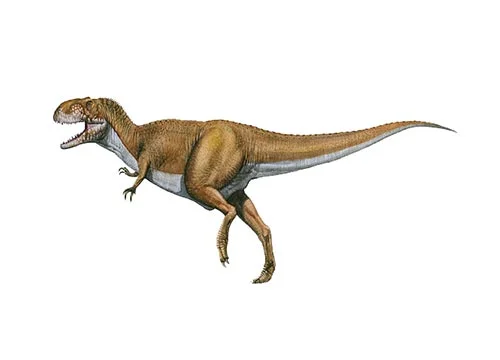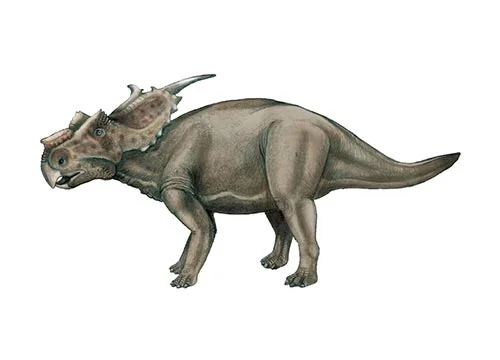Giganotosaurus (Giant southern lizard)

Gee-gah-note-oh-sore-us
Rodolfo Coria & Leonardo Salgado & Scott Sampson -1995
Carnivore
Estimated 12-13.2 meters long
Large Theropod
G. carolinii (type)
Argentina - Candeleros Formation
Late Cretaceous, 99-97 million years ago
Giganotosaurus Facts
Giganotosaurus, meaning “giant southern lizard,” is a genus of large theropod dinosaur that lived during the Late Cretaceous period, around 99 to 97 million years ago. Its fossils were first discovered in Argentina in 1993 and the genus was named and described by Argentine paleontologist Rodolfo Coria and American paleontologist Scott Sampson in 1995.
Giganotosaurus was one of the largest known carnivorous dinosaurs, with estimates of its length ranging from 12 to 13.2 meters (39 to 43 feet) and its weight from 6 to 13.8 metric tons (6.6 to 15.2 short tons). Its long, narrow skull was filled with dozens of sharp, serrated teeth, which it used to tear into its prey.
One of the most distinctive features of Giganotosaurus is its large, muscular legs, which suggest that it was a fast runner. Its long, powerful tail may have also helped to balance its body and aid in maneuverability while running. This combination of speed and agility likely made Giganotosaurus a formidable predator, able to take down even the largest herbivorous dinosaurs of its time.
Giganotosaurus was a member of the family Carcharodontosauridae, which also includes other large predatory dinosaurs such as Carcharodontosaurus and Mapusaurus. These dinosaurs were similar in many ways, but Giganotosaurus had some unique features, such as its narrow, elongated skull and its long, slender teeth.
Based on the structure of its bones, paleontologists believe that Giganotosaurus had a more flexible and agile neck than other large theropod dinosaurs, which may have allowed it to more easily maneuver and control its head while hunting. It likely hunted in packs, as evidenced by the discovery of multiple individuals of varying ages at the same site.
Giganotosaurus is an important dinosaur for paleontologists because it provides valuable insights into the evolution and ecology of large theropod dinosaurs during the Late Cretaceous period. Its size and speed, as well as its unique anatomy, help to fill in gaps in our understanding of how these massive predators hunted and interacted with their environments.
In conclusion, Giganotosaurus is a fascinating dinosaur that helps us to better understand the diversity and adaptations of large theropod dinosaurs during the Late Cretaceous period. Its massive size, speed, and unique anatomy set it apart from other theropods, and its potential pack hunting behavior suggests that it was a highly social and intelligent animal. As more fossils are discovered and studied, we are likely to learn even more about this impressive dinosaur and its place in the evolutionary history of theropods.



